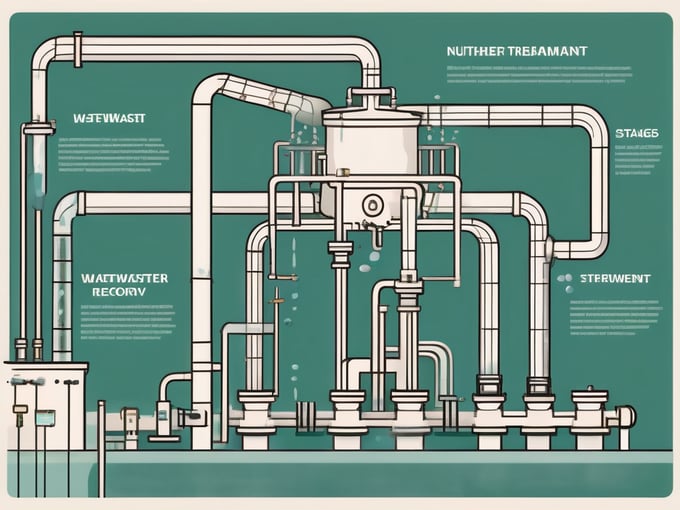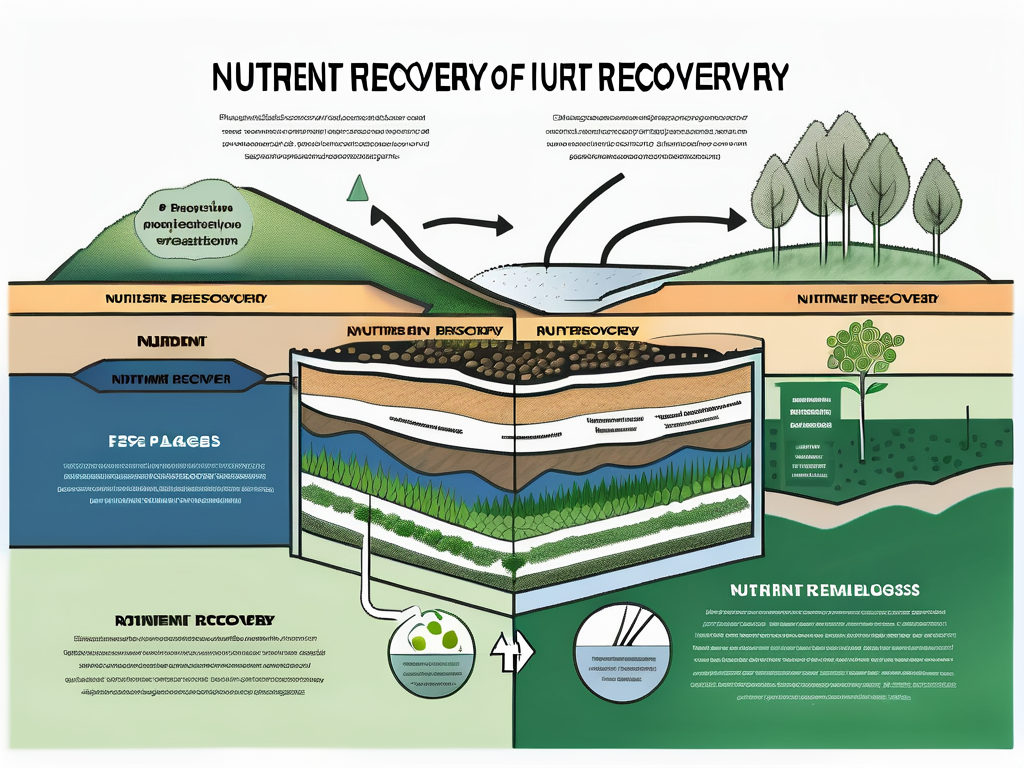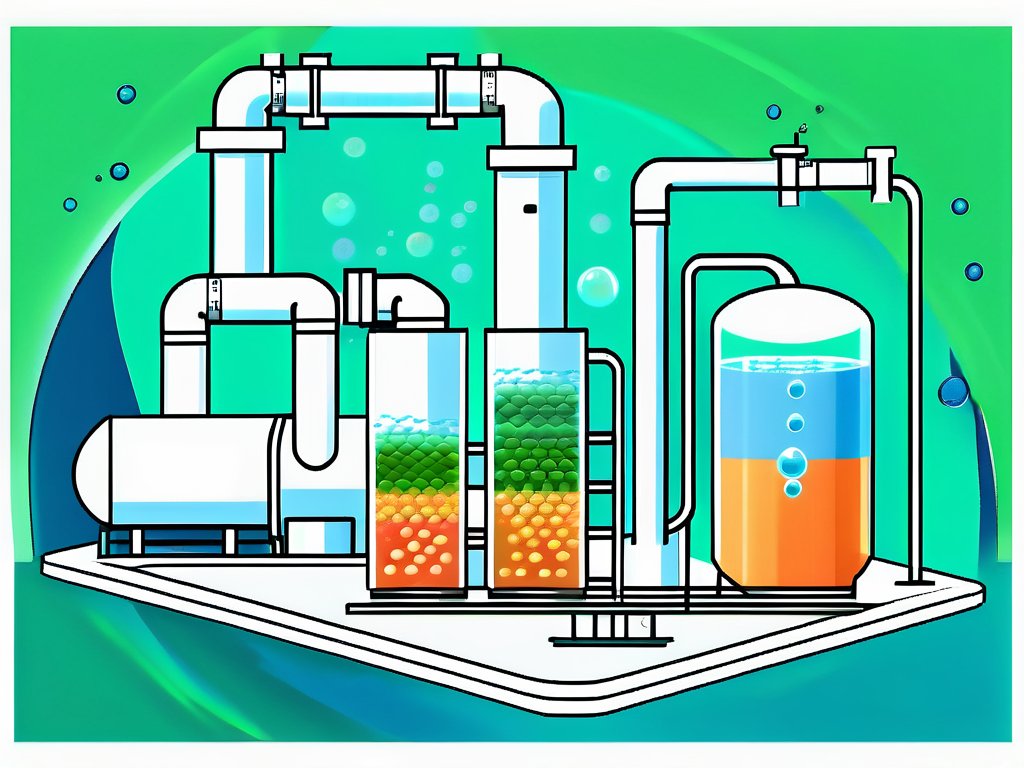
Nutrient Recovery: Wastewater Treatment Explained
Wastewater treatment is a critical process in maintaining the health of our environment and communities. This process involves the removal of contaminants from wastewater to produce an effluent that can be returned safely to the water cycle or reused. One key aspect of wastewater treatment is nutrient recovery, which involves extracting valuable nutrients like nitrogen and phosphorus from the wastewater for reuse. This article will delve into the intricacies of nutrient recovery in wastewater treatment, explaining the various processes, technologies, and benefits involved.
Understanding the importance of nutrient recovery requires a comprehensive knowledge of the wastewater treatment process, the role of nutrients in our environment, and the potential impacts of nutrient pollution. This article aims to provide a detailed glossary of terms and concepts related to nutrient recovery in wastewater treatment, serving as a comprehensive resource for those interested in this critical environmental process.
Understanding Wastewater Treatment
Wastewater treatment is a multi-step process designed to remove contaminants and pollutants from wastewater, which can come from various sources including households, industries, and storm runoff. The goal is to produce an effluent, or treated water, that can be safely discharged back into the environment or reused in some way. The process involves physical, chemical, and biological treatments to remove solids, organic matter, and nutrients.
Wastewater treatment is not just about removing harmful substances, but also about recovering valuable resources. Nutrient recovery, in particular, has gained significant attention due to the increasing demand for nutrients in agriculture and the potential environmental impacts of nutrient pollution.
Primary Treatment
The first step in wastewater treatment is primary treatment, which involves the removal of large solids and grit that could damage the treatment plant equipment. This is typically achieved through screening and sedimentation processes. The solids removed in this stage are often processed separately and can be used to produce bioenergy or compost.
While primary treatment effectively removes large solids, it does not significantly reduce the levels of organic matter, nutrients, and pathogens in the wastewater. Therefore, further treatment is necessary to ensure the wastewater is safe for discharge or reuse.
Secondary Treatment
Secondary treatment is the next stage in the wastewater treatment process. This stage involves the use of biological processes to remove organic matter and nutrients from the wastewater. Microorganisms are used to break down the organic matter and convert the nutrients into forms that can be removed from the water.
The most common form of secondary treatment is the activated sludge process, where air is pumped into a tank to promote the growth of bacteria that consume the organic matter and nutrients. The bacteria form clumps, or flocs, that can be easily separated from the water. The treated water is then disinfected before being discharged or reused.
Nutrient Recovery in Wastewater Treatment
Nutrient recovery is a critical aspect of wastewater treatment that involves extracting valuable nutrients like nitrogen and phosphorus from the wastewater. These nutrients can be reused in agriculture, reducing the need for synthetic fertilizers and helping to close the nutrient cycle.
However, nutrient recovery is not just about resource recovery. It is also a critical strategy for preventing nutrient pollution, which can have severe impacts on water quality and aquatic ecosystems. Excessive nutrients in water bodies can lead to eutrophication, a process that depletes oxygen levels in the water and leads to the death of aquatic life.
Nitrogen Recovery
Nitrogen is a vital nutrient for plant growth, but excessive amounts in water bodies can lead to eutrophication. In wastewater treatment, nitrogen is typically removed through a process called nitrification-denitrification. However, this process converts nitrogen into a gas that is released into the atmosphere, rather than recovering it for reuse.
There are several technologies available for nitrogen recovery from wastewater, including ion exchange, membrane separation, and biological processes. These technologies can recover nitrogen in the form of ammonium, which can be used directly as a fertilizer, or converted into other forms like nitrate or urea.
Phosphorus Recovery
Phosphorus is another essential nutrient for plant growth, but it is a limited resource that is being rapidly depleted due to mining for fertilizer production. Recovering phosphorus from wastewater not only provides a sustainable source of this valuable nutrient, but also prevents phosphorus pollution in water bodies.
Phosphorus can be recovered from wastewater through chemical precipitation, crystallization, or biological processes. The recovered phosphorus can be used to produce struvite, a slow-release fertilizer that is highly effective for crop growth.
Benefits and Challenges of Nutrient Recovery
Nutrient recovery from wastewater offers several benefits, including resource recovery, pollution prevention, and cost savings. By recovering nutrients from wastewater, we can reduce our reliance on non-renewable resources like phosphate rock and decrease the environmental impacts of nutrient pollution. Furthermore, nutrient recovery can provide a source of revenue for wastewater treatment plants, offsetting the costs of treatment.

However, there are also challenges to nutrient recovery, including the need for advanced technologies, the variability of nutrient concentrations in wastewater, and the regulatory and market barriers to the use of recovered nutrients. Overcoming these challenges requires ongoing research and development, as well as supportive policies and market incentives.
Technological Challenges
The technologies for nutrient recovery from wastewater are still in the early stages of development and can be costly to implement. Furthermore, these technologies need to be able to handle the variability of nutrient concentrations in wastewater, which can be influenced by factors like the source of the wastewater and the time of day.
Despite these challenges, there is significant potential for technological innovation in this field. Advances in membrane technology, for example, could improve the efficiency and cost-effectiveness of nutrient recovery. Furthermore, the integration of nutrient recovery with other processes, like energy recovery, could enhance the overall sustainability of wastewater treatment.
Regulatory and Market Challenges
There are also regulatory and market challenges to the use of recovered nutrients. For example, there may be restrictions on the use of recovered nutrients in agriculture due to concerns about contaminants. Furthermore, the market for recovered nutrients may be limited due to competition with cheap synthetic fertilizers.
Addressing these challenges requires supportive policies that recognize the value of nutrient recovery and promote the use of recovered nutrients. This could include regulations that encourage nutrient recovery, incentives for the use of recovered nutrients, and education and outreach to increase awareness and acceptance of recovered nutrients.
Future of Nutrient Recovery
The future of nutrient recovery in wastewater treatment looks promising, with ongoing advancements in technology and increasing recognition of the value of nutrient recovery. As we continue to face the challenges of resource depletion and environmental pollution, nutrient recovery offers a sustainable solution that benefits both our economy and our environment.

By continuing to invest in research and development, and by creating supportive policies and market incentives, we can enhance the viability and adoption of nutrient recovery in wastewater treatment. This will not only improve the sustainability of our wastewater treatment systems, but also contribute to a more circular economy where waste is viewed as a resource rather than a burden.



